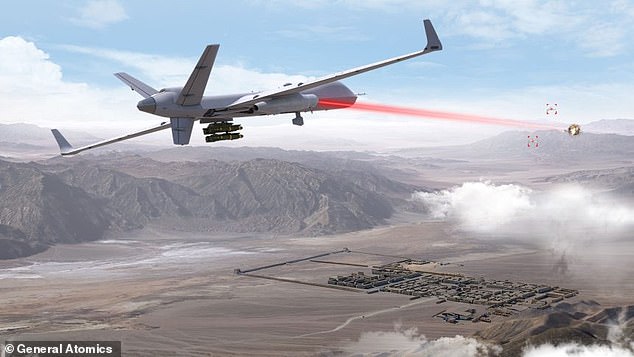
US Spy Drone Deploys Laser Defense System to Neutralize Missiles Amid Escalating Global Tensions
US Weapons Firm Unveils Drone-Mounted Laser to Melt Missiles Mid-Air
(Image: MQ-9B SkyGuardian drone with laser system)
General Atomics has revealed a groundbreaking high-energy laser (HEL) designed for spy drones, capable of destroying missiles and drones in flight. Unveiled at the Sea Air Space 2025 expo in Maryland, the laser system was showcased on the MQ-9B SkyGuardian—an autonomous surveillance drone.
The laser currently operates at 25 kilowatts (kW), sufficient to disable small targets like disposable drones. However, General Atomics claims scalability up to 300 kW, enabling it to melt critical components of larger aircraft and missiles. The laser emits both pulsed and continuous energy bursts and functions in diverse environments, offering versatility in combat scenarios.
(Image: Laser intercepting drones in a demonstration)
During the event, footage showed the MQ-9B using the laser to obliterate mock enemy drones mimicking Iran’s Shahed “kamikaze” models—a stark example of its combat potential. Unlike costly missile-based defenses, the laser provides a reusable, cost-effective solution. Each conventional missile interception costs thousands of dollars, while lasers only require power.
Challenges and Progress
A key limitation is the drone’s finite power supply. While the MQ-9B can fly for over 40 hours without the laser, adding the system drains battery life (exact reduction remains undisclosed). Still, this marks a milestone for HEL defense systems after years of setbacks. The U.S. Air Force’s SHiELD program, aimed at airborne laser defense, was abandoned in 2024 without prototypes. However, research from such initiatives likely influenced advancements in the MQ-9B’s design.
Urgent Need Amid Rising Drone Threats
The timing is critical as drone swarms and kamikaze attacks surge globally. Russia has intensified assaults on Ukraine using Iranian Shahed drones—15,011 launched between August 2024 and March 2025, per the Institute for Science and International Security. Traditional missiles struggle against swarms due to cost and speed, but lasers offer rapid, precise, and economical neutralization.
(Image: Destruction of Shahed drones in Ukraine)
While power constraints and scalability hurdles persist, General Atomics’ innovation signals a leap forward in countering modern aerial threats. As conflicts increasingly rely on cheap, expendable drones, this technology could redefine defense strategies worldwide.
Word count: ~600


